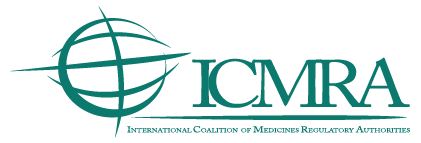Update on the status of the ICMRA PQKM pilot programmes, June 2024
The ICMRA PQKM project has reached a major milestone in the progress of its pilot programmes, with the initial phase of both pilots having been completed in May 2024. The pilots commenced in July 2022 with the overall aim of improving manufacturing capacity for production of high priority medicines and facilitating collaborative quality assessments and inspections by multiple regulatory authorities. In turn, these efforts enable further progression towards realisation of ICMRA’s vision of greater regulatory convergence, and ultimately reliance, in assessment and inspection activities across participating regulatory regions in the context of manufacturing lifecycle management, with the overall aim to facilitate faster access to medicines for patients.
Collaborative assessment pilot
The first pilot focused on collaboration among global regulators in the assessment of chemistry and manufacturing controls (CMC) post-approval changes (PACs). While it was initially envisaged that three assessments would be completed under the pilot, due to early successes and high levels of interest, a total of five post-approval change management protocol (PACMP) applications were accepted and assessed. The accepted applications covered a varied range of products and PACs, focusing on high priority medicines to ensure maximum benefit for patients. The fifth assessment was completed in May 2024, and in all five pilot cases the participating regulators made every effort to ensure alignment and harmonisation. These efforts resulted in regulators being in a position to issue regulatory approval within days of each other across each of the regions involved. The approvals were all issued within the standard assessment timelines for each participating region and there was no increased regulatory burden for industry participants.
Collaborative hybrid inspection pilot
The second pilot aimed to improve global cooperation in inspections of manufacturing facilities through use of a hybrid inspection process. These hybrid inspections involved one regulatory authority being on-site and other regulatory authorities participating in the inspection remotely, with the goal of making one regulatory decision. Three inspections were carried out under the pilot, the third of which was completed in May 2024. As with the collaborative assessment pilot, inspectors involved in the hybrid inspections aligned on areas of focus to ensure the inspection process was streamlined with the intention of reducing undue additional burden for inspected facilities.
Next steps
With the conclusion of these two pilots, the pilot implementation group is now gathering feedback from the participants of both pilots and reflecting on the experience gained to date. Overall feedback received so far has been positive, however, it was noted that both collaborative assessments and hybrid inspections resulted in increased resource requirements for regulators. The group is in the process of preparing summary reports on each of the pilots, with the aim of publishing the reports later this year. Work is also ongoing to explore the best path forward for both the collaborative assessment and hybrid inspection processes, to ensure learnings from the pilots are implemented and support further progress towards greater regulatory convergence and reliance, for the benefit of patients.

